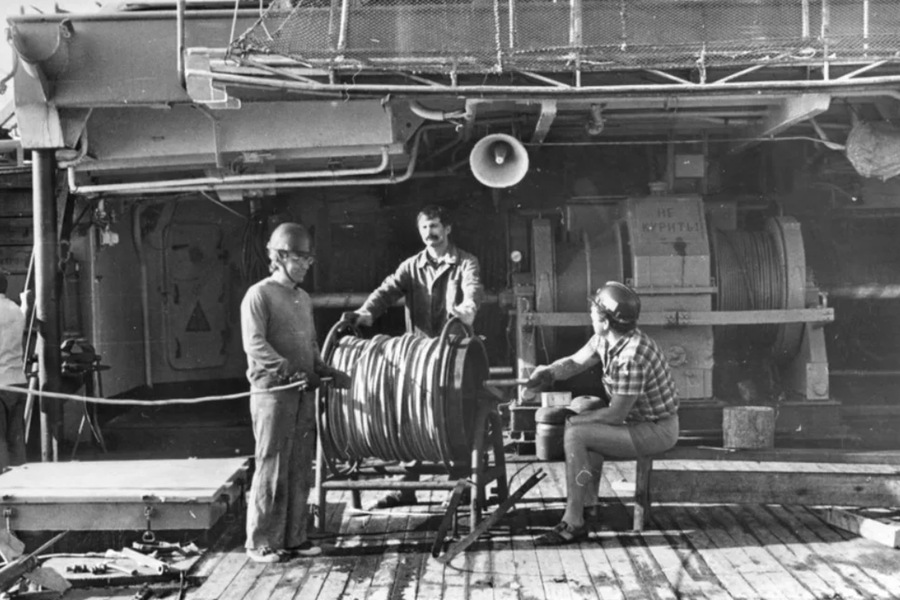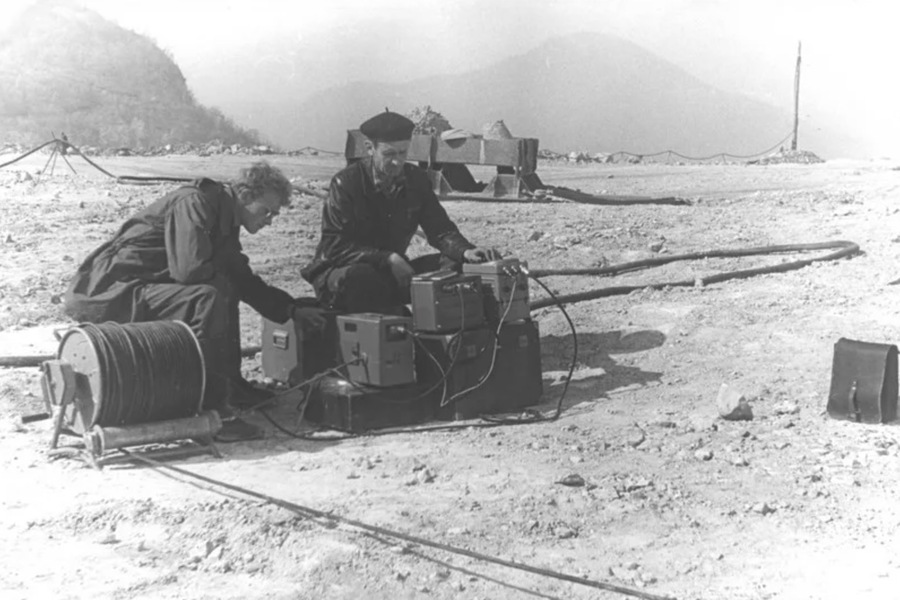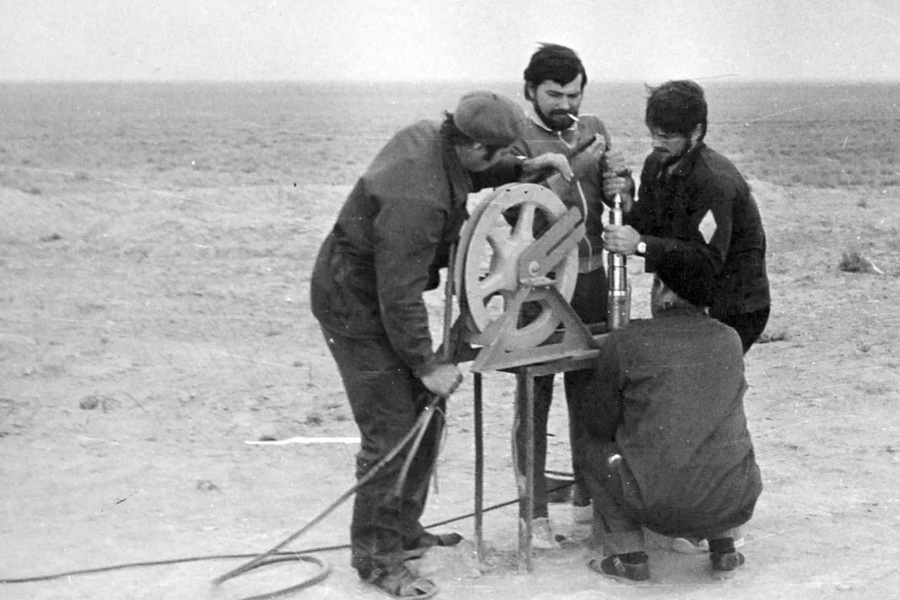Geophysics, a field that investigates the physical properties of the Earth and its surrounding space, has played a crucial role in understanding our planet’s internal structure and processes. From its origins, geophysics has been deeply intertwined with advancements in other scientific disciplines such as geology, physics, chemistry, astronomy, seismology, meteorology, and geography. Today, geophysics is a highly specialized science, with modern geophysical survey services playing an essential role in the exploration of natural resources, infrastructure development, and environmental protection.
The Birth of Geophysics: Foundations in the 17th to 19th Century
The foundations of geophysics were laid during the 17th to 19th centuries when the basic laws of classical physics were being discovered, and the first geophysical observatories were established. This period marked a crucial turning point in the understanding of Earth’s physical forces.
– 1640: In Sweden, one of the earliest known uses of geophysical techniques occurred with the use of a compass to explore magnetic ores. This early form of geomagnetic prospecting laid the groundwork for the development of magnetic survey techniques, which are still widely used today in resource exploration.
– 1687: Sir Isaac Newton formulated the law of universal gravitation, which became the theoretical basis for gravimetry—the study of variations in the Earth’s gravitational field. Gravimetry is crucial for subsurface exploration, as changes in gravitational forces can indicate differences in underground density, often pointing to mineral deposits or geological structures.
– 1753: Russian scientist Mikhail Lomonosov further advanced gravimetry by connecting gravity values measured on the Earth’s surface to its internal structure. He also proposed the use of a gas gravimeter, which became a pivotal tool in gravitational measurements and subsurface exploration.
– 1804: The celebrated naturalist Alexander von Humboldt applied physical methods to geography, contributing to the field of geomagnetism. His work was instrumental in connecting geophysics with geography, as he used physical principles to explain various geographical phenomena, including the Earth’s magnetic field.
– 1829: In Paris, the physicist Simeon Denis Poisson published a groundbreaking article on the use of the wave equation to describe the propagation of elastic waves in solid media. This work became the foundation for seismic exploration, which would later become one of the most important techniques for oil and gas exploration.
The development of geophysics as an independent field reached a new stage by the mid-19th century, when a substantial body of geophysical observational data had been collected, allowing scientists to begin generalizing and interpreting this data using physical laws.

Geophysics as an Independent Science: The 19th Century
By the mid-19th century, geophysics began to take shape as a distinct branch of geological science, benefiting from the accumulation of vast amounts of data from geophysical observations. The integration of these observations with the principles of physics and mathematics allowed scientists to better understand the Earth’s subsurface.
– 1870s-1890s: Professors B. Ya. Schweitzer and F. A. Sludsky from Moscow University made significant contributions to the field of gravimetry by identifying the Moscow gravitational anomaly through experimental pendulum observations and theoretical calculations. This discovery was pivotal in demonstrating how gravitational anomalies could be used to study the Earth’s internal structure and locate mineral deposits.
– 1894: Moscow University professor E.E. Leist began the first systematic geophysical survey of the Kursk Magnetic Anomaly (KMA) in Russia. This project was one of the earliest large-scale applications of magnetic survey techniques to locate mineral resources. The KMA would later become one of the world’s largest iron ore deposits, highlighting the importance of geophysical surveys in resource exploration.
During this period, seismology, magnetism, and gravimetry became established fields within geophysics, providing essential tools for understanding the Earth’s structure and processes.
The 20th Century: Geophysics Enters the Industrial Age
The 20th century witnessed remarkable growth in geophysics, driven by advancements in science, technology, and industrial demands for natural resources. Geophysical exploration techniques evolved rapidly, with significant contributions to the fields of seismology, electromagnetics, and radiometry.
– Early 20th Century: Geophysicists began to apply seismic methods to explore the subsurface, initially using natural seismic waves generated by earthquakes. Soon after, they developed the technique of artificially generating seismic waves using explosions or mechanical sources to map subsurface structures. This method, known as seismic reflection and refraction, became the foundation of modern oil and gas exploration, enabling companies to locate hydrocarbon reservoirs deep beneath the Earth’s surface.
– Vladimir Vernadsky, a Russian scientist, made a major contribution to geophysics by proposing the use of natural radioactivity to search for uranium and radium deposits. This led to the development of radiometric surveying techniques, which became essential for the mining industry, particularly in the search for radioactive minerals and other valuable resources.
– 1919: Systematic magnetic surveys were initiated at the Kursk Magnetic Anomaly (KMA), which played a key role in the development of magnetic geophysics. These surveys were instrumental in advancing the application of magnetic methods to resource exploration, laying the groundwork for modern magnetometry techniques used to detect and map mineral deposits.
– Electromagnetic methods and electrical resistivity surveys became popular during the mid-20th century for exploring subsurface materials, including ores, oil, and gas. These methods allowed geophysicists to measure variations in the Earth’s electrical conductivity, which provided clues about the types of materials present below the surface.
The Modern Era: Technological Advancements in Geophysics
The latter half of the 20th century and into the 21st century saw significant advancements in geophysical techniques, driven by technological innovations in electronics, data processing, and computational power.
– Seismic surveys became more refined, with the development of 3D seismic imaging allowing geophysicists to create detailed maps of subsurface structures. This technology revolutionized the oil and gas industry, enabling more accurate identification of reservoirs and reducing the risks associated with drilling.
– The advancement of computational geophysics has allowed scientists to process and interpret large volumes of geophysical data more effectively. Complex algorithms, machine learning, and big data analytics now play an essential role in geophysics, allowing for more precise modeling of the Earth’s interior and resource distribution.
– Remote sensing technologies, such as satellite-based magnetometry and gravimetry, have expanded the scope of geophysical exploration, enabling large-scale surveys over vast, inaccessible regions. These technologies have become essential tools in resource exploration, environmental monitoring, and natural disaster prediction.
– Nuclear geophysics also continued to develop, with the use of radiometric and nuclear logging tools to measure the natural radioactivity of rocks. These methods are widely used in the mining industry to detect minerals and in the oil and gas industry for well logging.

Geophysics Today: Applied and Fundamental Branches
In modern times, geophysics is divided into two primary branches: fundamental geophysics and applied geophysics.
- Fundamental Geophysics: This branch focuses on the theoretical and experimental study of Earth’s processes, phenomena, and physical properties. Fundamental geophysics seeks to uncover the fundamental laws governing Earth’s behavior, including plate tectonics, volcanic activity, and earthquake dynamics. Researchers in this field work on developing models and theories that explain the Earth’s physical processes at both the macro and micro levels.
- Applied Geophysics: Applied geophysics is more practical, aiming to solve real-world problems, particularly in resource exploration and environmental management. Modern geophysical survey services are highly specialized in the exploration of natural resources, including oil and gas, iron ore, gold, diamonds, and fresh water. These companies use advanced technologies such as seismic reflection, gravimetry, magnetometry, and electromagnetics to detect and map subsurface resources. Applied geophysics also plays a critical role in infrastructure development, providing essential data for the design and construction of highways, railways, bridges, tunnels, and large buildings.
The Future of Geophysics
The future of geophysics lies in continued advancements in technology, including improvements in sensor technology, computational methods, and data processing. As environmental concerns grow, geophysics is increasingly being applied to monitor and mitigate the effects of climate change, natural disasters, and environmental degradation.
The integration of artificial intelligence (AI) and machine learning into geophysical data analysis is poised to revolutionize the field, allowing for faster and more accurate interpretations of complex geophysical datasets. Additionally, space-based geophysics, utilizing satellites and remote sensing technologies, will play an increasingly important role in understanding global geophysical phenomena and supporting resource exploration in remote and inaccessible regions.
Conclusion
The history of geophysics is a story of scientific progress, shaped by the contributions of multiple fields and the relentless pursuit of understanding the Earth’s physical properties. From its humble beginnings in the 17th century to the high-tech industry it is today, geophysics has made significant strides in the exploration of natural resources, environmental monitoring, and the safe construction of infrastructure. As technological advancements continue to drive the field forward, geophysics will remain at the forefront of solving the world’s most pressing challenges, from energy security to climate change and disaster resilience.
Skydiver, feminist, band member, Mad Men fan and holistic designer. Acting at the crossroads of modernism and intellectual purity to craft delightful brand experiences. Let’s design a world that’s thoughtful, considered and aesthetically pleasing.
